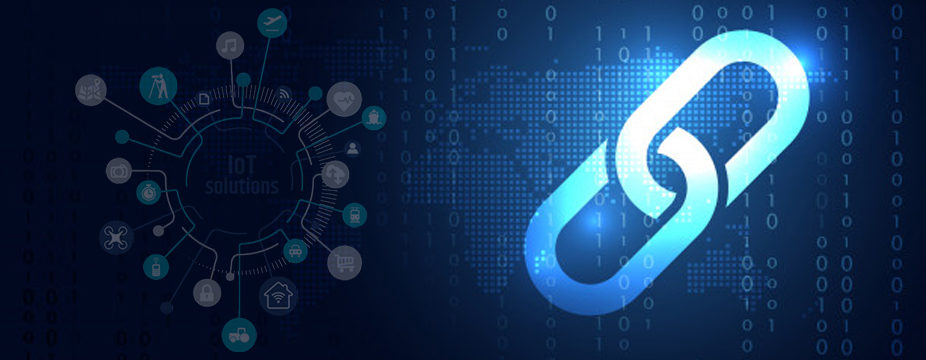|
Getting your Trinity Audio player ready...
|
With the progress in industry architecture and complexity in the adaption of IoT system networks, the centralization of IoT networks becomes more expensive for the maintenance of cloud-based infrastructure. Most of the IoT devices installed in the physical world are to measure and connect to other tangible devices. Because of the constraints like measuring, computation, storage, and internet bandwidth, IoT devices have limitations in providing ownership and data privacy. To address these challenges, Integrating blockchain with IoT systems offer peer-to-peer networks integrated with cryptographic processes which can offer many new features that improve the existing IoT systems. A blockchain-based IoT device provides triple-layered integrated system networks, that provide immutable transmission of variable data between two parties. As blockchain is built in a redistributed system, it provides more scalable security systems and prevents rogue networks.
The blockchain-based IoT architecture uses blockchain as distributed from a ledger to record all the transactions of an IoT system. How blockchain uses IoT? The architecture of blockchain in an IoT system has three different layers, the local IoT network, blockchain overlay IoT network, and cloud infrastructure network. To flawlessly connect these three layers, the architectural design has two connectors- blockchain connectors and cloud connectors. The blockchain connectors connect the information to various blocks in the hierarchical model and the cloud connector detects the disconnection and resolves issues between the cloud and overlay networks in the blocks. The distributed architectural design of IoT has the following advantages for large IoT systems in an enterprise.
– Blockchain prevents the forging or modification of data by tracking the measurements of data transmitted through the IoT system.
– Track and Trace: Digital information stored in an IoT system can enable the location of shipment and the circumstance for the occurrence of shipment. Automatically IoT component data can trigger insurance claims or freight settlements based on the agreement signed. It helps reduce extra costs in the supply chain and logistics system.
– Network integrity: IoT network integrating Blockchain can monitor the physical network components and critical networks. This guarantees the verification of data and manufacturing components, which is useful for predictive maintenance models.
– Blockchain removes technical bottlenecks and inefficiencies in peer-to-peer communications, individual identity, and data integrity via smart connect.
– Peer-to-peer communication: It enables the interaction between two or more internet participants for safe communication through different devices. It creates transparency of data regarding sales processes, production consumption, and inventory storage by transmitting information through digital twins without human intervention.
– The configuration of IoT-enabled devices is a complex task for the seamless transmission of information where Blockchain can be adapted for an IoT device to identify, authenticate, and secure data transfer.
– Digital Lineage: By adding crypto hardware to the products, its network can detect the value of the product in the secondary product by providing value to various antique products ranging from art galleries to spare parts of cars.
Industrial examples of IoT networks powered with Blockchain

- 1. Smart manufacturing: With the up-gradation in technology, manufacturers are looking to smart manufacturing. Massive datasets are collected during the product life cycle and manufacturing cycle. These fragmented datasets are complicated to perform data accumulation and data analytics. The blockchain can interconnect the IoT systems for internal communications between different machines connected through peer to peer blockchain network.
- 2. Supply chain management: By implementing blockchain-powered IoT systems, suppliers and manufacturers can prevent the installation of damaged/fraudulent parts in a product. With multiple suppliers supplying various parts of a single product, there is a chance of installation of faulty parts, as it is hard to apply fraud detection tech for every part. In the case of a faulty product, the IoT device can track the place from where the part has been supplied.
- 3. Healthcare: Healthcare is one of the socio-economic problems due to an increase in the world population. With blockchain, integrated IoT services provide an advantage over the limitation of health resources by providing virtual assistance of doctors accessible to every patient through an internet-enabled device.
- 4. Internet of vehicles: It defines vehicle-to-vehicle networks, vehicle-to-roadside networks, vehicle-infrastructure networks, and vehicle-to-pedestrian networks. Due to heterogeneity, decentralization, and not trustworthy, the security of transmission of communication and transaction is the main issue in the Internet of vehicles. Blockchain can provide a solution to these limitations.
- The recent appearance of blockchain technologies has addressed a few enterprise problems in the incumbent of IoT like- interoperability, trust, security, heterogeneity, traceability, and reliability. In this article, we discussed how the integration of blockchain in IoT can help up-gradation of its architecture, advantages, and opportunities for various industries like healthcare, manufacturing, automobile, etc. moreover the fully controlled blockchain also fulfills industry requirements for strategic systems like ERP, MES, PLM, and CRM.
If you need any help with idea validation, proof-of-concept, Data Science consulting, large-scale AI implementation, Big Data Engineering, or a creative solution for your IoT for Industrial Advantages data. You are at the right place.
Talk to our experts

2 Comments
I am incredibly grateful for the valuable insights provided in the article “Integrating Blockchain with IoT for Industrial Advantages, The comprehensive exploration of the synergistic potential between blockchain and IoT technologies has enlightened me and deepened my understanding of their transformative impact on industrial processes. The article’s clarity and relevance have undoubtedly broadened my horizons, and I express my heartfelt appreciation to the author for sharing such invaluable knowledge.
Thank you, James, for taking the time to read our blog! We truly appreciate your feedback and support. We’re thrilled to hear that you enjoyed the blog and found value in it. If you have any further questions or if there’s anything else we can assist you with, please don’t hesitate to reach out. We look forward to sharing more informative content with you in the future!